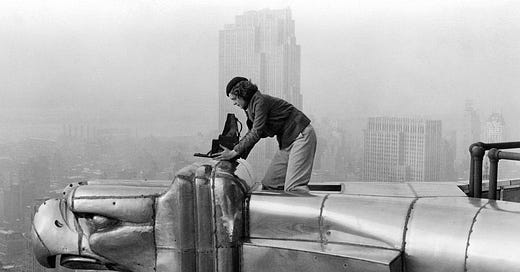Book Corner - Margaret Bourke-White
Margaret Bourke-White wasn’t just capturing history—she was making it. Born in 1904 in the Bronx, New York, she first picked up a camera while studying at Columbia University. Her journey behind the lens took off when she transferred to Cornell, where she sharpened her skills and set her sights on a photography career. While many photographers focused on portraits or landscapes, Bourke-White was interested in the industrial world. Her images of steel mills and machinery didn’t just document progress; they turned towering structures into works of art.
Bourke-White excelled at breaking barriers. She became the first Western photographer allowed into the Soviet Union in 1929, where she captured the reality of Soviet life under Joseph Stalin. Her images provided Americans with rare glimpses of life behind the Iron Curtain at a time when the USSR remained a mystery to much of the world.
When the Great Depression started, Margaret Burke-White created some of her most powerful work. Her camera told touching stories as families struggled and farms were lost under relentless drought. One of her most iconic photographs, Louisville Flood Victims, captured a haunting contrast—flood victims waiting in line for relief beneath a billboard proclaiming, "World’s Highest Standard of Living—There’s No Way Like the American Way." The image didn’t just document hardship; it exposed the stark inequalities of the era.
When World War II erupted, Bourke-White once again found herself on the front lines—literally. She made history as the first female war correspondent accredited by the U.S. military, becoming the only foreign photographer in Moscow when Nazi Germany launched its invasion in 1941. From bombed-out cities to troops on the move, she captured the war. Later, she traveled with U.S. forces across North Africa and Italy, often braving the same dangers as the soldiers she photographed.
Her most chilling assignment came in 1945 when she documented the liberation of the Buchenwald concentration camp. The images she captured there—of starving prisoners, mass graves, and the unimaginable horrors of the Holocaust—became some of the most vital photographic evidence of Nazi atrocities.
"In all my years of photography, I have never seen anything as horrible as the sights at Buchenwald," she said in an interview.
Bourke-White remained at the center of history even after the war, documenting India’s partition in 1947 and later covering the Korean War and the American civil rights movement. But in the 1950s, she was diagnosed with Parkinson’s disease. Though the illness eventually forced her to put down her camera, she continued to write and reflect on her groundbreaking career, leaving behind a legacy that still inspires photojournalists today.
Her lens didn’t just capture moments—it captured truth.




